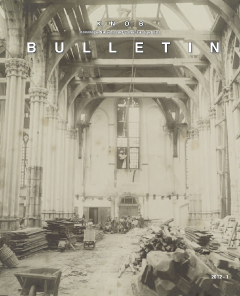Indexering ESCI / Scopus


Marieke Kuipers: Vijftig jaar Monumentenwet 1961-2011. Geert Medema: ‘En aan onze keukenmeid mogen wij zelfs geen haar krenken’. Lusten of lasten voor monumenteneigenaren. Marieke Kuipers: Culturele grondslagen van de Monumentenwet. Frits Niemeijer: Bescherming van stads- en dorpsgezichten. Van beeld naar inhoud. Natascha Lensvelt: Groen erfgoed: een nieuwe loot aan de monumentenstam. Gabri van Tussenbroek, Ad van Drunen en Edwin Orsel: Bouwhistorische waardenkaarten. Een gebiedsgerichte benadering van bouwhistorisch erfgoed. Vincent van Rossem: Een halve eeuw Monumentenwet: 1961-2011.
The instrument ‘village and urban conservation area’ has a history dating back to approximately 1900. In the first half of the twentieth century, for instance, protective regulations in the field of urban planning were already in effect on a municipal level and in the circles of the (Royal) Netherlands Archaeological Association (NOB) an initiative had already been taken for a Bill in which a vague provision in this field was included. It was not until 1961 that the village and urban conservation area was laid down in the first Monuments and Historic Buildings Act. The authority of...
Garden landscaping is an age-old human activity that went through various styles and fashions. Around 1900 garden architect Leonard Springer (1855-1940), among others, pointed out the lack of knowledge on the garden art of the seventeenth and eighteenth centuries. Springer was a major promoter of the profession of garden designer and landscape architect. The increased appreciation of landscape architecture resulted in the assessment of parks and their designation as listed monument/green area. Initially, the attention was focused on the parks belonging to country estates, 540 of which...
One of the spearheads of the modernisation of preservation of monuments and historic buildings (MoMo) is to have cultural history play a fully fledged role in spatial planning. The cultural-historical assessment is a very important aspect here and makes it possible to assess cultural-historical values early on in a spatial process. The building-historical values map is a strong instrument to define building-historical values. On the basis of inventories in Amsterdam, ‘s-Hertogenbosch, Leiden, Nijmegen and Utrecht experiences have been collected and bottlenecks ascertained, from...
The Dutch Monuments and Historic Buildings Act dates from 1961. Naturally, the Act was primarily intended to protect old buildings. In the first place the traditional heritage: churches, town gates, town halls and the houses of aristocrats. Soon architecture from a more recent past, the period 1850-1940, was also placed on the historic buildings register. The Act as an administrative instrument for the conservation of historic buildings was a great success. Consequently, the intentions of the legislator were fully complied with, but the Act had social side effects which may have been...
When Dutch legislation on monuments and historic buildings was developed, the discussion was mainly determined by the question whether the importance of preservation of monuments and historic buildings was in proportion to the infringement of an individual owner’s exercise of his property rights such protection would imply. This discussion is still relevant. The legislator’s choice to focus on the owner in the recent modernisation of preservation of monuments and historic buildings is also part of it. This article describes the history of the development of the Monuments and Historic...
In comparison with other European nations, the Netherlands was very late in introducing a Monuments and Historic Buildings Act. Not until 1961 did a definitive Act come into effect in order to protect ‘monuments of history and art’ in peace time against undesired decline and defacement. The cultural foundations for this were laid much earlier, particularly in the nineteenth century, simultaneously with the forming of nations and the rise of new journals, organisations and scientific disciplines. This article examines how the definition of the concept of monument in the first Section of...


open access mogelijk gemaakt door Stichting OpenAccess
